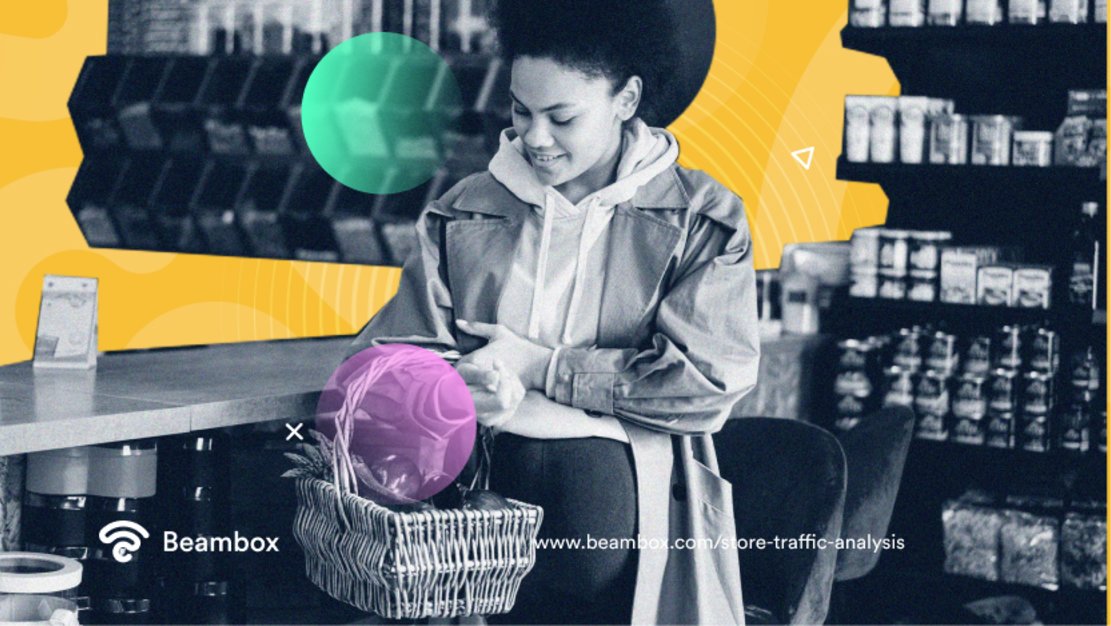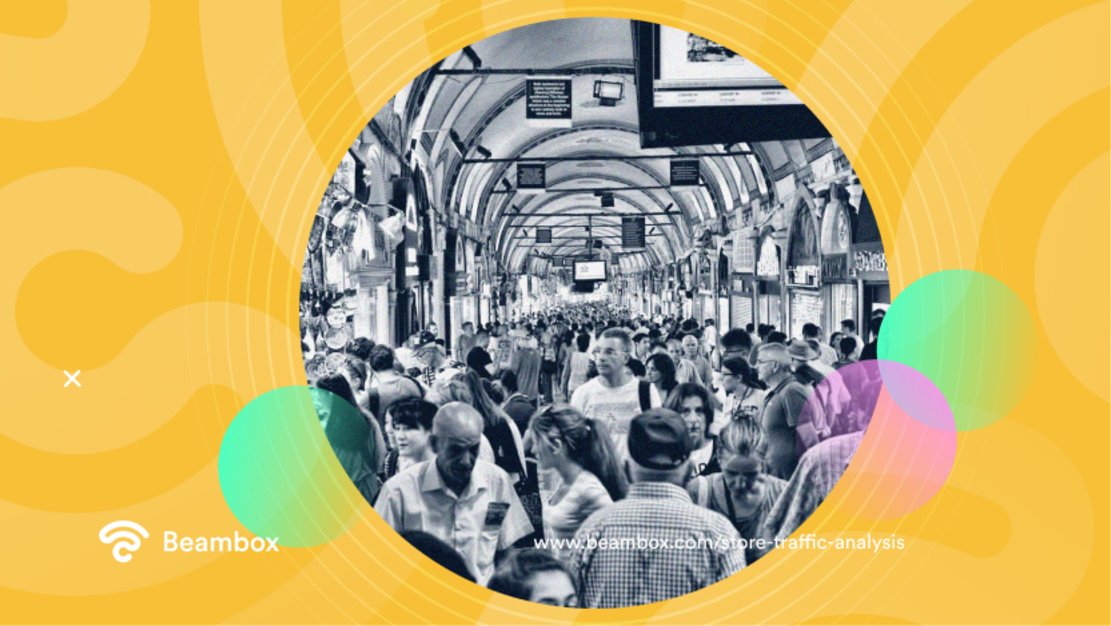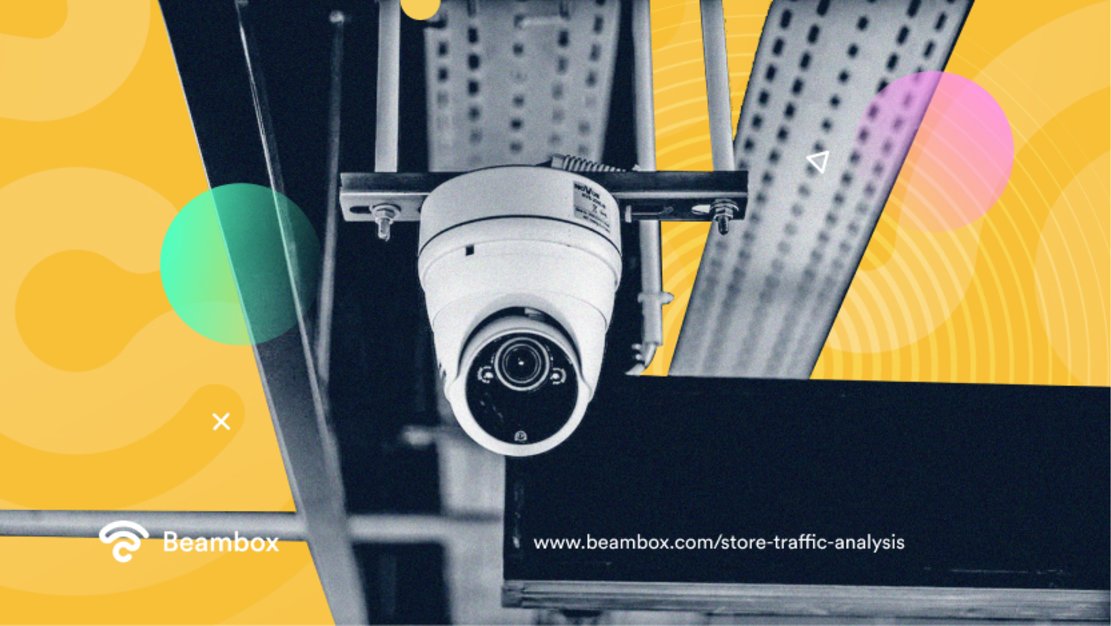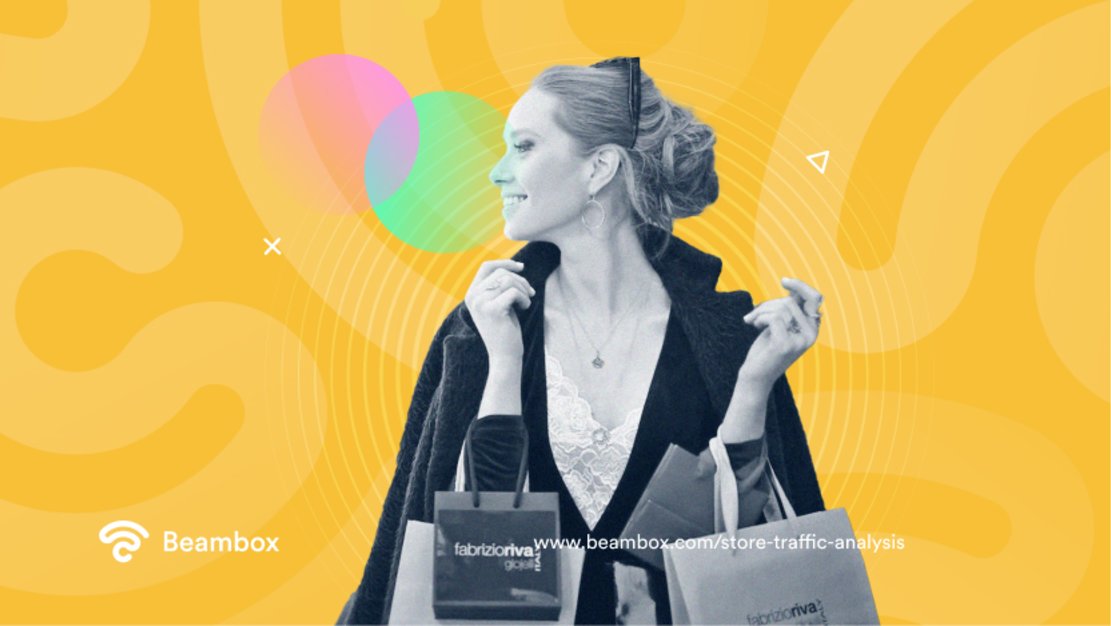Why talk about store traffic analysis when online buying is a thing?
You see, people like being able to check out a brand’s products and services online. But sometimes, they just want to see and touch what they’re thinking of buying in person before making a purchase.
Only going to a physical store can give them a better idea of what they’re getting. Between 60 to 65% of shoppers prefer in-store shopping. The reasons range from wanting to try items, avoiding delivery fees, and immediately purchasing items.

As things get better with the pandemic, people feel more comfortable going to stores again. Shopping in person could come back, but only if businesses do their part to bring shoppers back to physical stores.
There are many ways for brick-and-mortar businesses to get people interested in their products and services. They can make their store look nicer, run ads online, or mail people directly.
Keeping track of how many people visit the store can help store owners decide how to do visit-based marketing. If they have accurate information, the options are endless.
So, why is talking about store traffic analysis essential now?
What Does Store Traffic Mean?
But what does store traffic mean, anyway?
In lay terms, store traffic is how many people enter and exit a store. It’s a way to track how many people visit a store and how often.
This information is vital for store owners. It gives them a good idea of what customers do when they’re in the store. It also helps them see the customer conversion rate and how many first-time visitors turn into customers. Monitoring this transition is called conversion analysis.
There are different ways to keep track of store traffic–like counting by hand, using sensors, or watching with cameras. Store owners can use this information to determine the busiest times of the day. They also see how long people spend in the store and where they go while shopping.
Having this information helps store owners make better decisions about their stores. They can monitor and conduct a store traffic analysis to decide when to have sales. They can anticipate how many employees to work with and how to set up the store.
Store traffic data can also show store owners what popular products and promotions work well. They can choose better products to sell, how much to charge, and how to market their store.
To wrap it up, keep tabs on store traffic for retail businesses as it offers valuable information on customer behavior.
By consistently monitoring and analyzing store traffic, retailers can improve the shopping experience and increase sales. This results in higher customer satisfaction and overall success for the business.

“Store traffic” and “foot traffic” are similar but not exactly alike.
Store traffic analysis covers how many people go inside a store. It doesn’t matter why they went in–if they’re looking around, buying something, or just passing through. This information helps store owners understand their customers and make better decisions about their stores.
On the other hand, foot traffic counts the number of people who walk by a store without going inside. Foot traffic helps store owners understand how many potential customers are around. It also helps them know how easy people can see and get to their store.
While people often use ‘store traffic’ and ‘foot traffic’ interchangeably, they are different. Foot traffic data is valuable, but it is store traffic that we focus on in this article.
Store Traffic Analysis: What Is It?
Analyzing store traffic is an essential process for retailers to measure and understand the flow of customers in their stores. By analyzing this data, retailers can make informed decisions about store design, product placement, marketing, and sales strategies.
There are different methods of traffic analysis. These methods include counting customers, tracking time spent in the store, and monitoring customers’ routes. This information can be collected using cameras, sensors, and software.
One of the main goals of store traffic analysis is to identify the busiest times. This information allows retailers to optimize staffing, product placement, and business strategy. They can also evaluate the success of marketing campaigns and in-store promotions.
An analysis of store traffic can also provide valuable information on customer demographics. Retailers can use this data to target specific customer groups with relevant promotions and marketing. By understanding different customer groups’ shopping habits, retailers can optimize their store layout and product placement for increased sales.
In conclusion, store traffic analysis is a powerful tool for retailers to improve their business. By understanding customer behavior and preferences, retailers can make data-driven decisions. These decisions can increase sales, customer satisfaction, and competitive advantage.
Retail Store Traffic Analysis: How Can Businesses Thrive With It?
“Store traffic analysis” and “retail store traffic analysis” mean almost the same. They both refer to the flow of customers in a store, except for a subtle difference.
Store traffic includes customers entering any store, how often they visit, and their movement while in the store.
On the other hand, retail store traffic focuses on visits to retail locations. This focus sets itself apart from different types of businesses but retail.
Here are a few ways that businesses can leverage analyzing retail store traffic:
-
Optimizing store layout: Businesses can tell which areas get the most foot traffic. They can use this knowledge to arrange the store layout and place products that maximize sales.
-
Improving staffing levels: Retail traffic analysis provides insights into when stores are busiest. Business owners can schedule enough staff for peak times.
-
Targeting promotions: Businesses can understand customer demographics. With the information, they can tailor advertisements and marketing efforts to specific groups.
-
Evaluating marketing campaigns: Analysing retail store traffic allows businesses to gauge the impact of their marketing campaigns. They can determine success by analyzing customer traffic differences before and after the campaign. Afterward, they can make informed adjustments accordingly.
-
Improving product placement: Retail store analysis helps businesses gain insight into which products customers favor. They can optimize product placement and ensure that the most sought-after items are easily noticeable.
-
Enhancing customer experience: Businesses analyze shoppers’ store behavior and use this information to improve the store layout and product placement. This improvement creates a better shopping experience.
Retail store traffic analysis is an effective tool for businesses to improve their operations and boost sales. Companies can optimize store design, staffing, marketing, and product placement. These actions enhance the overall customer experience and increase customer satisfaction and loyalty.

Use Store Traffic Counters Effectively for Reliable Store Traffic Analysis Reports
Store traffic counters are valuable tools for retailers to understand the flow of their customers. But to be effective, the count must have some degree of accuracy.
Here are a few tips on using traffic counters effectively:
-
Place counters in strategic locations: Locations for traffic counting implements should accurately reflect customers’ flow. Ensure the accuracy of location intelligence by taking steps to reflect customer behavior.
-
Use multiple counters: Placement of traffic counters is essential for an accurate store traffic analysis. Traffic counters in locations that accurately capture the flow of customers entering and exiting the store bring the best results.
-
Integrate with other technologies: Combine traffic counters with other technologies to get a more in-depth look at customer behavior. Use this information to understand customer flow and shopping habits. It can also reveal the most popular products.
-
Regularly analyze and interpret the data: It’s crucial to look periodically at the traffic data collected by store traffic counters. Review this information frequently, and understand patterns, trends, and areas for improvement to optimize business operations.
-
Use data to inform decisions: Store traffic analysis can provide valuable insights to inform decisions about store layout and product placement. Marketing efforts and sales tactics also depend on the result of this analysis. Use this information to streamline operations and enhance the overall customer experience.
-
Update and calibrate the counters regularly: Keeping your counting tools updated and properly calibrated for accuracy is crucial. Reduce errors and get a more accurate representation of current customer behavior by taking this step.
Store traffic counters can give valuable insights into how customers behave and help businesses optimize their operations. Using data effectively allows companies to enhance their store design, marketing strategies, and customer experience. This step increases sales and leads to customer satisfaction.
5 Types of Store Traffic Counters in the Market Today
Today’s market offers several types of store traffic counters, each with unique features and benefits. Reliable store traffic analysis reports depend on the accuracy of these counters.
Here are some of the best types of store traffic counters:
-
Infrared Beam Counter: These counters detect store entry and exit. They are cost-effective, easy to install, and require low maintenance.
-
Video-Based Counter: Video-based counters use cameras to track customer movement. This equipment provides comprehensive insights into shopping behavior and product popularity.
-
Thermal Imaging Counter: Thermal imaging counters use heat detection to track store entry and exit accurately and in real-time.
-
Electronic Counter: Electronic counters use sensors to track store entry and exit. They are reliable, accurate, and easy to use.
-
WiFi-Based Counter: WiFi counters detect store entry and exit, provide real-time data, and can integrate with cameras or software.
A business’s ideal store traffic counter will vary based on its unique needs and goals. Retailers should carefully assess their budget and desired level of accuracy before selecting a store traffic counter.
Consulting experts and comparing options can also help find the best fit for the business.

How To Increase Store Traffic
For many retailers, boosting store traffic is a crucial objective, as it can result in higher sales and more significant revenue. Store owners should know how to increase store traffic and design strategies using store traffic analysis.
Here are several strategies that businesses can use to increase store traffic:
-
Offer promotions and discounts: Attract customers with promotions or discounts such as buy-one-get-one or percent-off sales.
-
Improve store layout and design: Attract and retain customers with a well-designed store. Attractive displays, clear signages, and an inviting atmosphere are a sure invitation.
-
Optimize store hours: Adjust store hours based on peak traffic times, determined by analyzing store traffic data.
-
Offer in-store events and experiences: Attract customers and foster community with in-store events. These events include product demos, workshops, and appreciation events.
-
Utilize digital marketing: Drive traffic to your store through email marketing, social media ads, and SEO.
-
Partner with local organizations: Partner with local organizations, such as schools and community groups, to host events and reach new customers.
-
Focus on customer service: Drive repeat business and positive referrals with excellent customer service, boosting store traffic.
-
Evaluate and improve store atmosphere: Regularly improve store atmosphere (lighting, temp, music, etc.) to influence customer behavior.

Leverage Store Traffic Analysis To Grow Your Business Now
As you can see, store traffic analysis is valuable for business owners and customers. Knowing customer behavior can help you scale your business needs and grow your revenues.
To leverage store traffic, small business owners need various marketing features. They also need business solutions that help track and record customer behavior and preferences.
Beambox’s WiFi digital marketing solution can help you get the most out of your customer relations. You can get reviews, contact lists, and information about your customer’s comings and goings through your guest WiFi network.
Beambox can help you plan, monitor, and redirect your marketing efforts to grow your business.
Learn more about Beambox and start growing your business now.
Get Started With Free WiFi Marketing
Beambox helps businesses like yours grow with data capture, marketing automation and reputation management.
Sign up for 30 days free